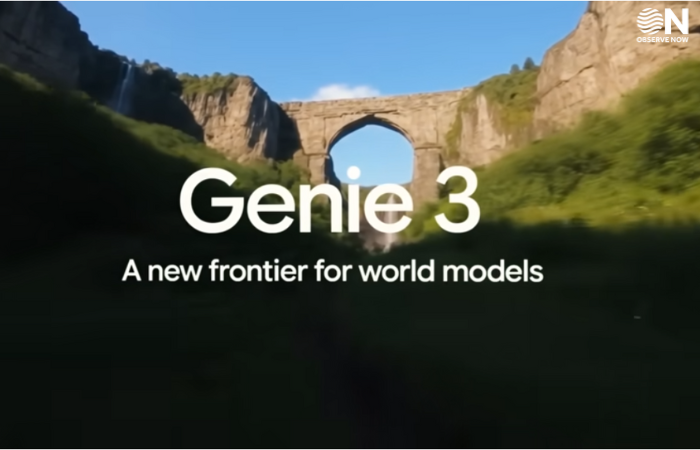DeepMind Launches Genie 3: AI’s Gateway to Real-Time Virtual Worlds

In a striking leap toward artificial general intelligence (AGI), DeepMind has introduced Genie 3, a cutting-edge AI system that can create fully interactive, real-time virtual environments based on simple text prompts or reference images. Known as a “world model,” Genie 3 marks a significant advancement in how AI systems understand, interact with, and learn from their surroundings.
With the ability to simulate detailed and physics-aware environments—ranging from industrial warehouses to alpine ski slopes—Genie 3 isn’t just generating visuals; it’s creating entire training ecosystems for AI agents and robots to explore, learn, and adapt without real-world risk or limitations.
Genie 3 is the latest in DeepMind’s line of generative models, but instead of focusing on language or image creation, this model specializes in environment simulation. The system can take a prompt like “a busy factory floor” or an image of a snow-covered hill and turn it into a real-time, interactive environment with physical properties intact—gravity, object interaction, friction, and more.
These environments are not pre-rendered scenes; they’re dynamically generated 3D worlds that AI agents can navigate, manipulate, and learn from—essentially acting as a “playground” for training intelligent systems.
The development of Genie 3 brings us a step closer to the AGI dream—an AI that can perform any intellectual task a human can. While language and image generation have seen explosive progress, world models like Genie 3 address a core missing piece: the embodied learning environment.
By placing AI agents in realistic, customizable settings, researchers can simulate infinite scenarios—from emergency response to warehouse logistics—without relying on costly, risky, or limited physical testing.
“Genie 3 allows us to teach AI systems not just to think, but to experience,” a DeepMind spokesperson shared. “It’s like going from reading a manual to practicing in a real-world simulator.”
Virtual environments have long been used in robotics and AI research, but they were often constrained by static designs or required complex programming. Genie 3 democratizes and accelerates the process, allowing on-demand, physics-grounded worlds to be spun up in seconds.
This can radically improve how AI systems are trained, shortening development cycles, reducing cost, and enhancing safety by allowing experimentation in controlled simulations.
For example, autonomous delivery drones could be tested in thousands of weather conditions and terrains virtually, long before facing real skies. Similarly, robots could train for factory operations without disrupting actual workflows.
While currently focused on virtual environments, the implications of Genie 3 stretch into fields like robotics, gaming, education, and even metaverse development. Future versions may integrate haptic feedback, advanced object dynamics, and multi-agent simulations, further blurring the line between virtual and physical realities.
As DeepMind continues to push the frontiers of AI, Genie 3 stands out not just as a technical marvel but as a tool that could shape how intelligent systems learn, adapt, and ultimately, co-exist with humans.
















